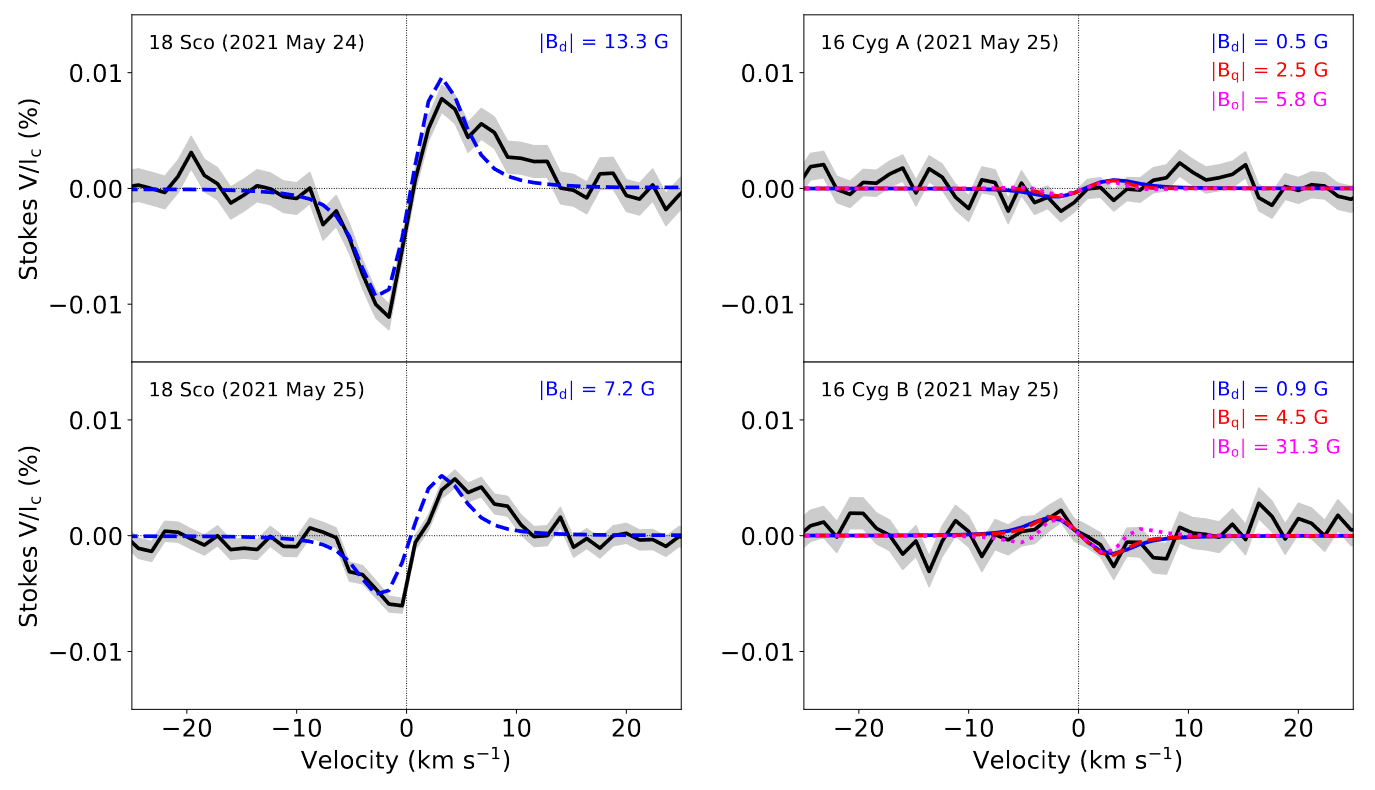The rotation rates of main-sequence stars slow over time as they gradually lose angular momentum to their magnetized stellar winds. The rate of angular momentum loss depends on the strength and morphology of the magnetic field, the mass-loss rate, and the stellar rotation period, mass, and radius. Previous observations suggested a shift in magnetic morphology between two F-type stars with similar rotation rates but very different ages (88 Leo and ρ CrB). In this Letter, we identify a comparable transition in an evolutionary sequence of solar analogs with ages between 2–7 Gyr. We present new spectropolarimetry of 18 Sco and 16 Cyg A & B from the Large Binocular Telescope, and we reanalyze previously published Zeeman Doppler images of HD 76151 and 18 Sco, providing additional constraints on the nature and timing of this transition.

Read more: Metcalfe et al. 2022, ApJ Letter, 933, 17; arXiv 2206.08540
